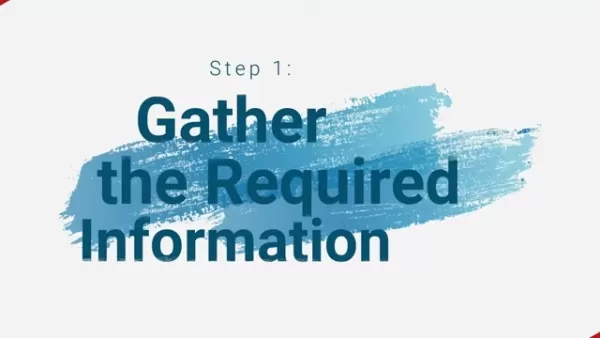Fake reviews are a big problem -- and here's how AI could help fix it

Since its inception in 2007, Trustpilot has become a go-to platform for user reviews, amassing a staggering 238 million reviews across nearly a million businesses and spanning 50 nationalities. While Trustpilot does feature reviews of US businesses, I found that local shops I searched for weren't listed, and I had more success with Yelp. It seems Trustpilot has a stronger foothold in Europe, but for our discussion here, the geographical focus isn't our main concern. Instead, we're diving into a critical issue that plagues review sites: the proliferation of fake reviews.
In 2023, Trustpilot managed to identify and remove 3.3 million fake reviews, following the removal of 2.6 million the previous year. This ongoing battle against fake reviews is made even more challenging by the rise of generative AI. According to research published in the Proceedings of the National Academy of Sciences of the United States of America (PNAS), only about half of consumers can differentiate between AI-generated text and human-written content. This creates a significant hurdle for both consumers and platforms like Trustpilot, who are tasked with filtering out fake reviews to ensure the authenticity of consumer opinions.
Trustpilot has made it a core mission to tackle this issue head-on. In an insightful conversation with Anoop Joshi, Trustpilot's Chief Trust Officer, we delved into how the company is fighting back against AI-generated fake reviews.
Anoop Joshi's Journey to Trustpilot's Chief Trust Officer
Anoop Joshi, who has been with Trustpilot for over four years, leads the company's Trust and Safety and Legal and Privacy operations with a team of about 80. His role encompasses a broad spectrum of activities, including litigation, public affairs, global communications, commercial contracting, content moderation, brand protection, and fraud investigations. Initially, Joshi was responsible for enforcement-related work, tackling misuse on the Trustpilot platform by businesses or consumers, and addressing issues like fake reviews and various forms of abuse.
His team evolved into the company's first platform integrity team, enhancing the operational side of trust and safety. This work gained industry recognition, leading Trustpilot to become a founding member of the Coalition of Trusted Reviews alongside major players like Amazon, TripAdvisor, Glassdoor, Booking.com, and Expedia. Joshi's background as both a lawyer and software engineer uniquely positions him to navigate the intersection of law and technology, crucial for building and maintaining trust on the platform.
Defining the Role of a Chief Trust Officer
According to Joshi, the role of a Chief Trust Officer at Trustpilot is to ensure the company lives up to its vision of being the universal symbol of trust. This involves defining what trust means for Trustpilot, which includes the integrity of reviews, the content on the website, and how the company treats both consumers and businesses. Additionally, the role drives governance and processes that mitigate risk, ensure compliance, and ultimately foster trust and loyalty among stakeholders such as consumers, employees, businesses, investors, policymakers, and journalists. As technology becomes more pervasive and online engagement grows, the need for such roles in the C-suite is expected to increase.
Common Types of Fake Reviews on Trustpilot
Trustpilot categorizes fake reviews as those not based on genuine experiences or those intended to mislead readers. The most common types they encounter and remove include:
- Spam Reviews: Reviews that serve as advertisements or promote other businesses.
- Conflicts of Interest: Reviews left by business owners or employees about their own business.
- Misleading Reviews: Reviews submitted by individuals who haven't actually experienced the business.
- Incentive-based Reviews: Reviews influenced by incentives, often with misleading content.
Impact of AI-generated Content on Review Authenticity
The rise of generative AI has made it easier for individuals to create content, lowering the barriers for generating fake reviews. Trustpilot's approach to detecting these reviews focuses on behaviors rather than just the content itself. Their automated systems analyze how reviews are submitted, looking for patterns and suspicious markers, while also considering the relationship between the reviewer and the business. Despite the advent of technologies like ChatGPT, Trustpilot's latest Transparency Report indicates a consistent year-over-year detection rate of fake reviews, suggesting that their systems are holding up well against this challenge.
How Trustpilot Detects Fake Reviews Using AI and Machine Learning
Every review submitted to Trustpilot undergoes analysis by automated fake review detection engines. These engines consider various facets of the review, such as the reviewer's prior behavior and any promotional statements. Some patterns may take time to emerge before action is taken. Additionally, Trustpilot relies on its community of consumers and businesses to flag suspicious reviews, which are then reviewed by human moderators in the content integrity team. If a review is removed, the reviewer is notified and given a chance to appeal the decision. This combination of automated detection and human oversight helps continually improve Trustpilot's approach to identifying and removing fake reviews.
Challenges in Distinguishing Genuine and Fake Reviews
One of the primary challenges Trustpilot faces is that some patterns of behavior are not immediately obvious and require time to develop and understand. This makes distinguishing between genuine and fake reviews a continuous challenge.
Handling Genuine Reviews Assisted by AI
Trustpilot evaluates whether reviewers have had a genuine experience with a business and if that experience is accurately reflected in their review. Factors such as content copied from other sources, including AI-generated text, are considered when determining if a review is suspicious. If a high degree of suspicion is found, the review is removed, and the reviewer is informed and given the opportunity to challenge the decision. Trustpilot aims to strike a balance, recognizing that AI tools can assist reviewers in framing genuine experiences, especially for those with accessibility or neurodiversity needs.
Balancing Automated Detection with Human Oversight
Trustpilot ensures that humans are involved in designing and implementing its automation software. While automation is crucial for scaling operations, the problems Trustpilot solves are fundamentally human, and these challenges evolve over time. Therefore, automation must adapt based on insights gained from human behavior.
Changes in Fake Review Detection Rates Over Time
Despite a year-on-year increase in total reviews from 46 million in FY 2022 to 54 million in FY 2023, the proportion of fake reviews removed remained consistent at 6%. In 2023, Trustpilot's systems detected and removed 79% of fake reviews, showcasing the effectiveness of their ongoing investment in technology. While AI and machine learning continue to evolve, Trustpilot's focus on behavioral patterns and community reporting helps maintain a robust detection system.
Long-term Effects of Fake Reviews on Trust and Reputation
Fake reviews can significantly impact consumer decisions, leading to negative experiences and a loss of trust in online platforms. If platforms fail to address fake reviews effectively, consumers may lose faith in the platforms they use to make purchasing decisions, affecting both consumer trust and business reputation.
Ethical Considerations in AI Use for Review Moderation
Transparency is at the heart of Trustpilot's ethical approach to using AI in review moderation. The company is open about its use of AI for automated decision-making, aligning with its commitment to fostering trust between consumers and businesses.
Educating Consumers on Identifying Real Reviews
Trustpilot uses Trust Signals to highlight verified reviews and allows reviewers to verify themselves, ensuring consumers can distinguish between different types of reviews. Additionally, when enforcement actions are taken against businesses for platform misuse, Trustpilot displays Consumer Warnings to help consumers make informed choices.
Future of AI in Combating Fake Reviews
The future holds significant potential for using AI to combat fake reviews, particularly with generative AI's ability to predict patterns. Trustpilot's extensive data and experience since 2007 position it well to develop better fake detection models. Moreover, AI can enhance transparency and guide users online, but with increased sophistication comes greater responsibility.
Future Developments in Online Reviews
As the distinction between human-generated and AI-generated content grows, the value of genuine, experience-based content will increase. Platforms like Trustpilot, which invest in technology, people, community, and processes to highlight authentic voices, will become increasingly valuable to both consumers and businesses.
We'd like to extend our gratitude to Anoop Joshi for this insightful interview. His perspectives offer valuable insights into navigating the complex world of online reviews. What are your thoughts? Have these insights helped you better understand how to sift through online reviews? Share your thoughts in the comments below.
Stay updated with my daily project updates on social media. Don't forget to subscribe to my weekly newsletter, and follow me on Twitter/X at @DavidGewirtz, on Facebook at Facebook.com/DavidGewirtz, on Instagram at Instagram.com/DavidGewirtz, and on YouTube at YouTube.com/DavidGewirtzTV.
Related article
 AI-Powered Cover Letters: Expert Guide for Journal Submissions
In today's competitive academic publishing environment, crafting an effective cover letter can make the crucial difference in your manuscript's acceptance. Discover how AI-powered tools like ChatGPT can streamline this essential task, helping you cre
AI-Powered Cover Letters: Expert Guide for Journal Submissions
In today's competitive academic publishing environment, crafting an effective cover letter can make the crucial difference in your manuscript's acceptance. Discover how AI-powered tools like ChatGPT can streamline this essential task, helping you cre
 US to Sanction Foreign Officials Over Social Media Regulations
US Takes Stand Against Global Digital Content Regulations
The State Department issued a sharp diplomatic rebuke this week targeting European digital governance policies, signaling escalating tensions over control of online platforms. Secretary Marco
US to Sanction Foreign Officials Over Social Media Regulations
US Takes Stand Against Global Digital Content Regulations
The State Department issued a sharp diplomatic rebuke this week targeting European digital governance policies, signaling escalating tensions over control of online platforms. Secretary Marco
 Ultimate Guide to AI-Powered YouTube Video Summarizers
In our information-rich digital landscape, AI-powered YouTube video summarizers have become indispensable for efficient content consumption. This in-depth guide explores how to build a sophisticated summarization tool using cutting-edge NLP technolog
Comments (2)
0/200
Ultimate Guide to AI-Powered YouTube Video Summarizers
In our information-rich digital landscape, AI-powered YouTube video summarizers have become indispensable for efficient content consumption. This in-depth guide explores how to build a sophisticated summarization tool using cutting-edge NLP technolog
Comments (2)
0/200
![PaulWilson]() PaulWilson
PaulWilson
 August 5, 2025 at 7:00:59 PM EDT
August 5, 2025 at 7:00:59 PM EDT
AI tackling fake reviews sounds promising, but can it really outsmart cunning bots? Trustpilot's massive review pool is impressive, yet I wonder if local shops get drowned out. 🤔 Need more transparency on how AI filters the noise!


 0
0
![AnthonyMartinez]() AnthonyMartinez
AnthonyMartinez
 July 27, 2025 at 9:19:04 PM EDT
July 27, 2025 at 9:19:04 PM EDT
I never thought AI could tackle fake reviews like this! 🤯 It’s wild how it might spot patterns in shady feedback. But, can it really outsmart sneaky bots writing 5-star nonsense? I’m curious if Trustpilot’s gonna fully lean into this tech or just dip their toes.


 0
0

Since its inception in 2007, Trustpilot has become a go-to platform for user reviews, amassing a staggering 238 million reviews across nearly a million businesses and spanning 50 nationalities. While Trustpilot does feature reviews of US businesses, I found that local shops I searched for weren't listed, and I had more success with Yelp. It seems Trustpilot has a stronger foothold in Europe, but for our discussion here, the geographical focus isn't our main concern. Instead, we're diving into a critical issue that plagues review sites: the proliferation of fake reviews.
In 2023, Trustpilot managed to identify and remove 3.3 million fake reviews, following the removal of 2.6 million the previous year. This ongoing battle against fake reviews is made even more challenging by the rise of generative AI. According to research published in the Proceedings of the National Academy of Sciences of the United States of America (PNAS), only about half of consumers can differentiate between AI-generated text and human-written content. This creates a significant hurdle for both consumers and platforms like Trustpilot, who are tasked with filtering out fake reviews to ensure the authenticity of consumer opinions.
Trustpilot has made it a core mission to tackle this issue head-on. In an insightful conversation with Anoop Joshi, Trustpilot's Chief Trust Officer, we delved into how the company is fighting back against AI-generated fake reviews.
Anoop Joshi's Journey to Trustpilot's Chief Trust Officer
Anoop Joshi, who has been with Trustpilot for over four years, leads the company's Trust and Safety and Legal and Privacy operations with a team of about 80. His role encompasses a broad spectrum of activities, including litigation, public affairs, global communications, commercial contracting, content moderation, brand protection, and fraud investigations. Initially, Joshi was responsible for enforcement-related work, tackling misuse on the Trustpilot platform by businesses or consumers, and addressing issues like fake reviews and various forms of abuse.
His team evolved into the company's first platform integrity team, enhancing the operational side of trust and safety. This work gained industry recognition, leading Trustpilot to become a founding member of the Coalition of Trusted Reviews alongside major players like Amazon, TripAdvisor, Glassdoor, Booking.com, and Expedia. Joshi's background as both a lawyer and software engineer uniquely positions him to navigate the intersection of law and technology, crucial for building and maintaining trust on the platform.
Defining the Role of a Chief Trust Officer
According to Joshi, the role of a Chief Trust Officer at Trustpilot is to ensure the company lives up to its vision of being the universal symbol of trust. This involves defining what trust means for Trustpilot, which includes the integrity of reviews, the content on the website, and how the company treats both consumers and businesses. Additionally, the role drives governance and processes that mitigate risk, ensure compliance, and ultimately foster trust and loyalty among stakeholders such as consumers, employees, businesses, investors, policymakers, and journalists. As technology becomes more pervasive and online engagement grows, the need for such roles in the C-suite is expected to increase.
Common Types of Fake Reviews on Trustpilot
Trustpilot categorizes fake reviews as those not based on genuine experiences or those intended to mislead readers. The most common types they encounter and remove include:
- Spam Reviews: Reviews that serve as advertisements or promote other businesses.
- Conflicts of Interest: Reviews left by business owners or employees about their own business.
- Misleading Reviews: Reviews submitted by individuals who haven't actually experienced the business.
- Incentive-based Reviews: Reviews influenced by incentives, often with misleading content.
Impact of AI-generated Content on Review Authenticity
The rise of generative AI has made it easier for individuals to create content, lowering the barriers for generating fake reviews. Trustpilot's approach to detecting these reviews focuses on behaviors rather than just the content itself. Their automated systems analyze how reviews are submitted, looking for patterns and suspicious markers, while also considering the relationship between the reviewer and the business. Despite the advent of technologies like ChatGPT, Trustpilot's latest Transparency Report indicates a consistent year-over-year detection rate of fake reviews, suggesting that their systems are holding up well against this challenge.
How Trustpilot Detects Fake Reviews Using AI and Machine Learning
Every review submitted to Trustpilot undergoes analysis by automated fake review detection engines. These engines consider various facets of the review, such as the reviewer's prior behavior and any promotional statements. Some patterns may take time to emerge before action is taken. Additionally, Trustpilot relies on its community of consumers and businesses to flag suspicious reviews, which are then reviewed by human moderators in the content integrity team. If a review is removed, the reviewer is notified and given a chance to appeal the decision. This combination of automated detection and human oversight helps continually improve Trustpilot's approach to identifying and removing fake reviews.
Challenges in Distinguishing Genuine and Fake Reviews
One of the primary challenges Trustpilot faces is that some patterns of behavior are not immediately obvious and require time to develop and understand. This makes distinguishing between genuine and fake reviews a continuous challenge.
Handling Genuine Reviews Assisted by AI
Trustpilot evaluates whether reviewers have had a genuine experience with a business and if that experience is accurately reflected in their review. Factors such as content copied from other sources, including AI-generated text, are considered when determining if a review is suspicious. If a high degree of suspicion is found, the review is removed, and the reviewer is informed and given the opportunity to challenge the decision. Trustpilot aims to strike a balance, recognizing that AI tools can assist reviewers in framing genuine experiences, especially for those with accessibility or neurodiversity needs.
Balancing Automated Detection with Human Oversight
Trustpilot ensures that humans are involved in designing and implementing its automation software. While automation is crucial for scaling operations, the problems Trustpilot solves are fundamentally human, and these challenges evolve over time. Therefore, automation must adapt based on insights gained from human behavior.
Changes in Fake Review Detection Rates Over Time
Despite a year-on-year increase in total reviews from 46 million in FY 2022 to 54 million in FY 2023, the proportion of fake reviews removed remained consistent at 6%. In 2023, Trustpilot's systems detected and removed 79% of fake reviews, showcasing the effectiveness of their ongoing investment in technology. While AI and machine learning continue to evolve, Trustpilot's focus on behavioral patterns and community reporting helps maintain a robust detection system.
Long-term Effects of Fake Reviews on Trust and Reputation
Fake reviews can significantly impact consumer decisions, leading to negative experiences and a loss of trust in online platforms. If platforms fail to address fake reviews effectively, consumers may lose faith in the platforms they use to make purchasing decisions, affecting both consumer trust and business reputation.
Ethical Considerations in AI Use for Review Moderation
Transparency is at the heart of Trustpilot's ethical approach to using AI in review moderation. The company is open about its use of AI for automated decision-making, aligning with its commitment to fostering trust between consumers and businesses.
Educating Consumers on Identifying Real Reviews
Trustpilot uses Trust Signals to highlight verified reviews and allows reviewers to verify themselves, ensuring consumers can distinguish between different types of reviews. Additionally, when enforcement actions are taken against businesses for platform misuse, Trustpilot displays Consumer Warnings to help consumers make informed choices.
Future of AI in Combating Fake Reviews
The future holds significant potential for using AI to combat fake reviews, particularly with generative AI's ability to predict patterns. Trustpilot's extensive data and experience since 2007 position it well to develop better fake detection models. Moreover, AI can enhance transparency and guide users online, but with increased sophistication comes greater responsibility.
Future Developments in Online Reviews
As the distinction between human-generated and AI-generated content grows, the value of genuine, experience-based content will increase. Platforms like Trustpilot, which invest in technology, people, community, and processes to highlight authentic voices, will become increasingly valuable to both consumers and businesses.
We'd like to extend our gratitude to Anoop Joshi for this insightful interview. His perspectives offer valuable insights into navigating the complex world of online reviews. What are your thoughts? Have these insights helped you better understand how to sift through online reviews? Share your thoughts in the comments below.
Stay updated with my daily project updates on social media. Don't forget to subscribe to my weekly newsletter, and follow me on Twitter/X at @DavidGewirtz, on Facebook at Facebook.com/DavidGewirtz, on Instagram at Instagram.com/DavidGewirtz, and on YouTube at YouTube.com/DavidGewirtzTV.
 AI-Powered Cover Letters: Expert Guide for Journal Submissions
In today's competitive academic publishing environment, crafting an effective cover letter can make the crucial difference in your manuscript's acceptance. Discover how AI-powered tools like ChatGPT can streamline this essential task, helping you cre
AI-Powered Cover Letters: Expert Guide for Journal Submissions
In today's competitive academic publishing environment, crafting an effective cover letter can make the crucial difference in your manuscript's acceptance. Discover how AI-powered tools like ChatGPT can streamline this essential task, helping you cre
 US to Sanction Foreign Officials Over Social Media Regulations
US Takes Stand Against Global Digital Content Regulations
The State Department issued a sharp diplomatic rebuke this week targeting European digital governance policies, signaling escalating tensions over control of online platforms. Secretary Marco
US to Sanction Foreign Officials Over Social Media Regulations
US Takes Stand Against Global Digital Content Regulations
The State Department issued a sharp diplomatic rebuke this week targeting European digital governance policies, signaling escalating tensions over control of online platforms. Secretary Marco
 Ultimate Guide to AI-Powered YouTube Video Summarizers
In our information-rich digital landscape, AI-powered YouTube video summarizers have become indispensable for efficient content consumption. This in-depth guide explores how to build a sophisticated summarization tool using cutting-edge NLP technolog
Ultimate Guide to AI-Powered YouTube Video Summarizers
In our information-rich digital landscape, AI-powered YouTube video summarizers have become indispensable for efficient content consumption. This in-depth guide explores how to build a sophisticated summarization tool using cutting-edge NLP technolog
 August 5, 2025 at 7:00:59 PM EDT
August 5, 2025 at 7:00:59 PM EDT
AI tackling fake reviews sounds promising, but can it really outsmart cunning bots? Trustpilot's massive review pool is impressive, yet I wonder if local shops get drowned out. 🤔 Need more transparency on how AI filters the noise!


 0
0
 July 27, 2025 at 9:19:04 PM EDT
July 27, 2025 at 9:19:04 PM EDT
I never thought AI could tackle fake reviews like this! 🤯 It’s wild how it might spot patterns in shady feedback. But, can it really outsmart sneaky bots writing 5-star nonsense? I’m curious if Trustpilot’s gonna fully lean into this tech or just dip their toes.


 0
0





























